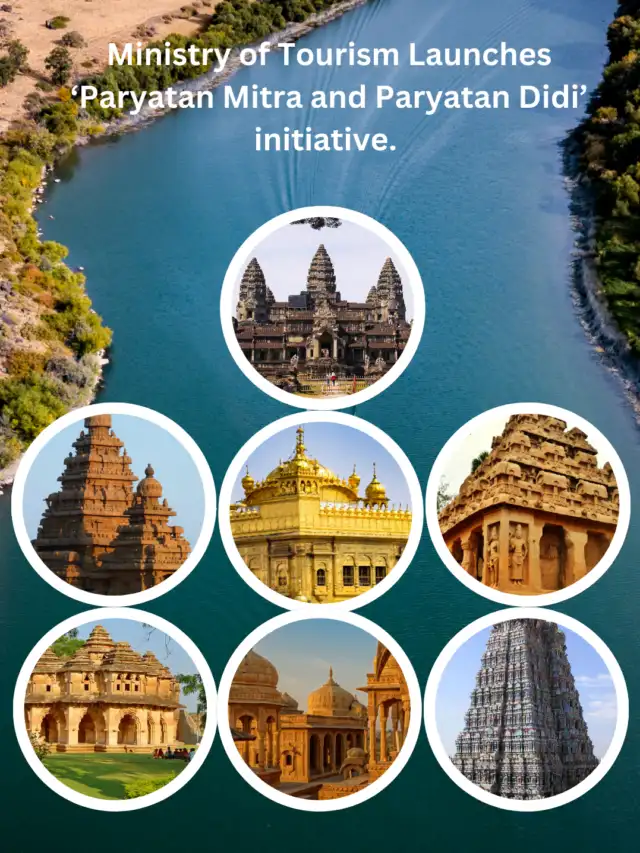
What is the Dharti Aaba Janjatiya Gram Utkarsh Abhiyan and how will it impact tribal communities?
On October 2nd, 2024, the Prime Minister of India, Shri Narendra Modi, launched the Dharti Aaba Janjatiya Gram Utkarsh Abhiyan (DAJGUA) from Hazaribagh, Jharkhand, marking the birth anniversary of Mahatma Gandhi. This landmark initiative is designed to improve the lives of tribal communities across India, with a particular focus on enhancing infrastructure, health, education, and livelihood opportunities. The scheme has a substantial budget of Rs. 79,156 crore, with the central government contributing Rs. 56,333 crore and state governments contributing Rs. 22,823 crore.
What is the main objective of Dharti Aaba Janjatiya Gram Utkarsh Abhiyan?
The Abhiyan’s goal is to transform 63,843 villages that are primarily inhabited by tribal communities across 549 districts and 2,911 blocks spread over 30 States and Union Territories. The scheme is designed to fill critical gaps in social infrastructure, health, education, and livelihood. It involves 25 key interventions, which will be implemented through the coordinated efforts of 17 ministries. This initiative is expected to benefit over 5 crore tribal people by ensuring holistic and sustainable development in these regions.
How is the Dharti Aaba Janjatiya Gram Utkarsh Abhiyan linked to Mahatma Gandhi’s vision?
The timing of the launch on Mahatma Gandhi’s birth anniversary holds significant importance. Gandhi’s vision of rural upliftment and inclusivity for all segments of society aligns with the objectives of this campaign. The Dharti Aaba Janjatiya Gram Utkarsh Abhiyan embodies the ideals of equal development, bringing the marginalized tribal communities to the forefront of India’s progress.
Major announcements under the Dharti Aaba Janjatiya Gram Utkarsh Abhiyan
During the event, the Prime Minister also made several key announcements that complement the vision of this Abhiyan. He inaugurated 40 new Eklavya Model Residential Schools (EMRS) and laid the foundation stone for an additional 25 schools, which are expected to be built at a cost of Rs. 2,834 crore. The government’s goal is to establish 728 EMRSs in tribal-majority areas across the country. These schools will provide high-quality education to approximately 3.5 lakh tribal students. With a total budget allocation of Rs. 28,919.72 crore for the scheme, the construction and staffing of these schools will be completed by March 2026.
How will Eklavya schools benefit tribal students?
The Eklavya Schools will play a critical role in enhancing the educational infrastructure in tribal regions. The government has set ambitious targets, with the aim to recruit more than 38,000 teaching and non-teaching staff for these schools, of which 9,000 have already been hired. The budget for each school has been increased significantly, with Rs. 37.8 crore allocated for schools in plain areas and Rs. 48 crore for those in hilly, northeastern, and left-wing extremism-affected areas. The enhanced funding will ensure that these schools are equipped with state-of-the-art facilities, including smart classrooms.
What are the specific initiatives under the Dharti Aaba Janjatiya Gram Utkarsh Abhiyan?
The Abhiyan has been structured around various key initiatives to ensure the holistic development of tribal communities:
- Eklavya Schools: The Prime Minister inaugurated 40 new Eklavya Model Residential Schools (EMRS) and laid the foundation stone for 25 additional schools. These schools, costing around Rs. 2,834 crore, are a part of the government’s vision to provide quality education to tribal children. A total of 728 EMRSs will be established across tribal-majority regions, catering to over 3.5 lakh tribal students.
- Pradhan Mantri Janjati Adivasi Nyaya Maha Abhiyan (PM-JANMAN): The Prime Minister also inaugurated and laid the foundation stone for projects worth Rs. 1,365 crore under PM-JANMAN, which includes:
- 1387 km of roads
- 120 Anganwadis
- 250 Multi-Purpose Centres
- 10 school hostels
- Saturation of Critical Gaps: The initiative will address the shortfalls in areas such as healthcare, education, infrastructure, and livelihood opportunities. It draws on the success of previous programs like PM-JANMAN, which has already benefitted Particularly Vulnerable Tribal Groups (PVTG) with an investment of Rs. 24,104 crore.
How does the Dharti Aaba Janjatiya Gram Utkarsh Abhiyan build on previous tribal development programs?
The Dharti Aaba Janjatiya Gram Utkarsh Abhiyan builds on the success of earlier programs like PM-JANMAN, which was launched on Janjatiya Gaurav Divas in November 2023. Since then, the scheme has significantly progressed, with 40,000 homes handed over to beneficiaries, and 50,000 more homes currently under construction.
Infrastructure boost through PM-JANMAN projects
Along with the launch of the Dharti Aaba Janjatiya Gram Utkarsh Abhiyan, the Prime Minister inaugurated and laid the foundation stone for various projects under the Pradhan Mantri Janjati Adivasi Nyaya Maha Abhiyan (PM-JANMAN). These projects, worth Rs. 1,365 crore, include the construction of 1,387 km of roads, 120 Anganwadis, 250 Multi-Purpose Centres, and 10 school hostels. These facilities will serve as the backbone for improving infrastructure in tribal areas, helping in better connectivity and access to essential services like education and healthcare.
धरती आबा जनजातीय ग्राम उत्कर्ष अभियान : जनजातीय विकास के लिए व्यापक पहल
2 अक्टूबर, 2024 को, महात्मा गांधी की जयंती के अवसर पर, भारत के प्रधानमंत्री श्री नरेंद्र मोदी ने धरती आबा जनजातीय ग्राम उत्कर्ष अभियान (DAJGUA) का शुभारंभ झारखंड के हज़ारीबाग से किया। यह ऐतिहासिक पहल देश भर के जनजातीय समुदायों के जीवन को बेहतर बनाने के उद्देश्य से शुरू की गई है, जिसमें विशेष रूप से बुनियादी ढांचे, स्वास्थ्य, शिक्षा और आजीविका के अवसरों को सुदृढ़ करने पर ध्यान केंद्रित किया गया है। इस योजना का कुल बजट 79,156 करोड़ रुपये है, जिसमें केंद्र सरकार द्वारा 56,333 करोड़ रुपये और राज्य सरकारों द्वारा 22,823 करोड़ रुपये का योगदान शामिल है।
धरती आबा जनजातीय ग्राम उत्कर्ष अभियान का मुख्य उद्देश्य क्या है?
अभियान का उद्देश्य 63,843 गांवों का समग्र विकास करना है, जो 549 जिलों और 2,911 ब्लॉकों में फैले हैं और मुख्य रूप से जनजातीय आबादी वाले हैं। यह योजना सामाजिक बुनियादी ढांचे, स्वास्थ्य, शिक्षा और आजीविका में महत्वपूर्ण अंतराल को भरने के लिए बनाई गई है। इस योजना के तहत 25 प्रमुख हस्तक्षेपों को 17 मंत्रालयों के समन्वित प्रयासों के माध्यम से लागू किया जाएगा। इस पहल से 5 करोड़ से अधिक जनजातीय लोगों को लाभ मिलने की उम्मीद है, जिससे इन क्षेत्रों में समग्र और सतत विकास सुनिश्चित होगा।
महात्मा गांधी के दृष्टिकोण से धरती आबा जनजातीय ग्राम उत्कर्ष अभियान का क्या संबंध है?
महात्मा गांधी की जयंती पर इस अभियान की शुरुआत का विशेष महत्व है। गांधीजी का ग्रामीण विकास और समाज के सभी वर्गों के समावेशी विकास का दृष्टिकोण इस अभियान के उद्देश्यों से मेल खाता है। धरती आबा जनजातीय ग्राम उत्कर्ष अभियान गांधीजी के समान विकास के आदर्शों को मूर्त रूप देता है, जो हाशिए पर खड़े जनजातीय समुदायों को भारत की प्रगति के केंद्र में लाता है।
धरती आबा जनजातीय ग्राम उत्कर्ष अभियान के अंतर्गत प्रमुख घोषणाएं
इस कार्यक्रम के दौरान प्रधानमंत्री ने अभियान के विज़न को साकार करने के लिए कई महत्वपूर्ण घोषणाएं भी कीं। उन्होंने 40 नए एकलव्य मॉडल आवासीय विद्यालयों (EMRS) का उद्घाटन किया और 25 अतिरिक्त स्कूलों की आधारशिला रखी, जिन्हें 2,834 करोड़ रुपये की लागत से बनाया जाएगा। सरकार का लक्ष्य है कि देश भर के जनजातीय बहुल क्षेत्रों में 728 EMRS स्थापित किए जाएं। इन विद्यालयों से लगभग 3.5 लाख जनजातीय छात्रों को गुणवत्तापूर्ण शिक्षा मिलेगी। इस योजना के लिए कुल 28,919.72 करोड़ रुपये का बजट आवंटित किया गया है और मार्च 2026 तक इन स्कूलों का निर्माण और स्टाफिंग पूरी हो जाएगी।
एकलव्य विद्यालय जनजातीय छात्रों के लिए कैसे फायदेमंद होंगे?
एकलव्य विद्यालय जनजातीय क्षेत्रों में शैक्षिक ढांचे को बेहतर बनाने में महत्वपूर्ण भूमिका निभाएंगे। सरकार ने इन विद्यालयों के लिए 38,000 से अधिक शिक्षण और गैर-शिक्षण कर्मचारियों की भर्ती का लक्ष्य रखा है, जिनमें से 9,000 की भर्ती पहले ही की जा चुकी है। प्रत्येक विद्यालय के लिए बजट में भी उल्लेखनीय वृद्धि की गई है, जिसमें मैदानी क्षेत्रों के लिए 37.8 करोड़ रुपये और पहाड़ी, पूर्वोत्तर और नक्सल प्रभावित क्षेत्रों के लिए 48 करोड़ रुपये आवंटित किए गए हैं। यह बढ़ी हुई धनराशि इन विद्यालयों को आधुनिक सुविधाओं से लैस करने में सहायक होगी, जिनमें स्मार्ट कक्षाएं भी शामिल हैं।
धरती आबा जनजातीय ग्राम उत्कर्ष अभियान के अंतर्गत कौन-कौन से विशिष्ट कार्यक्रम हैं?
अभियान को जनजातीय समुदायों के समग्र विकास के लिए कई प्रमुख कार्यक्रमों के इर्द-गिर्द संरचित किया गया है:
- एकलव्य स्कूल: प्रधानमंत्री ने 40 नए एकलव्य मॉडल आवासीय विद्यालयों (EMRS) का उद्घाटन किया और 25 अतिरिक्त स्कूलों की आधारशिला रखी। इन स्कूलों की लागत लगभग 2,834 करोड़ रुपये है और इसका उद्देश्य जनजातीय बच्चों को गुणवत्तापूर्ण शिक्षा प्रदान करना है। कुल 728 EMRS स्थापित किए जाएंगे, जो 3.5 लाख जनजातीय छात्रों को शिक्षा प्रदान करेंगे।
- प्रधानमंत्री जनजातीय आदिवासी न्याय महा अभियान (PM-JANMAN): प्रधानमंत्री ने PM-JANMAN के तहत 1,365 करोड़ रुपये की परियोजनाओं का उद्घाटन और शिलान्यास किया, जिसमें शामिल हैं:
- 1387 किलोमीटर सड़कें
- 120 आंगनवाड़ी केंद्र
- 250 बहुउद्देशीय केंद्र
- 10 स्कूल छात्रावास
- महत्वपूर्ण अंतराल की पूर्ति: यह पहल स्वास्थ्य, शिक्षा, बुनियादी ढांचा, और आजीविका के अवसरों जैसे क्षेत्रों में कमियों को पूरा करेगी। यह PM-JANMAN जैसी पूर्व की सफल योजनाओं से प्रेरणा लेती है, जिसने विशेष रूप से कमजोर जनजातीय समूहों (PVTG) को 24,104 करोड़ रुपये के निवेश से लाभान्वित किया है।
धरती आबा जनजातीय ग्राम उत्कर्ष अभियान पहले की जनजातीय विकास योजनाओं पर कैसे आधारित है?
धरती आबा जनजातीय ग्राम उत्कर्ष अभियान ने पहले की योजनाओं जैसे PM-JANMAN की सफलता पर आधारित है, जिसे नवंबर 2023 में जनजातीय गौरव दिवस पर लॉन्च किया गया था। तब से, इस योजना में महत्वपूर्ण प्रगति हुई है, जिसमें 40,000 घरों को लाभार्थियों को सौंपा गया है, और 50,000 घर निर्माणाधीन हैं।
PM-JANMAN परियोजनाओं के माध्यम से बुनियादी ढांचे को बढ़ावा
धरती आबा जनजातीय ग्राम उत्कर्ष अभियान के शुभारंभ के साथ ही प्रधानमंत्री ने प्रधानमंत्री जनजातीय आदिवासी न्याय महा अभियान (PM-JANMAN) के तहत विभिन्न परियोजनाओं का उद्घाटन और शिलान्यास किया। इन परियोजनाओं की कुल लागत 1,365 करोड़ रुपये है, जिसमें 1,387 किलोमीटर सड़क, 120 आंगनवाड़ी केंद्र, 250 बहुउद्देश्यीय केंद्र, और 10 स्कूल छात्रावास का निर्माण शामिल है। ये सुविधाएं जनजातीय क्षेत्रों में बुनियादी ढांचे को सुधारने में सहायक होंगी, जिससे शिक्षा और स्वास्थ्य सेवाओं तक बेहतर पहुंच और कनेक्टिविटी सुनिश्चित होगी।









